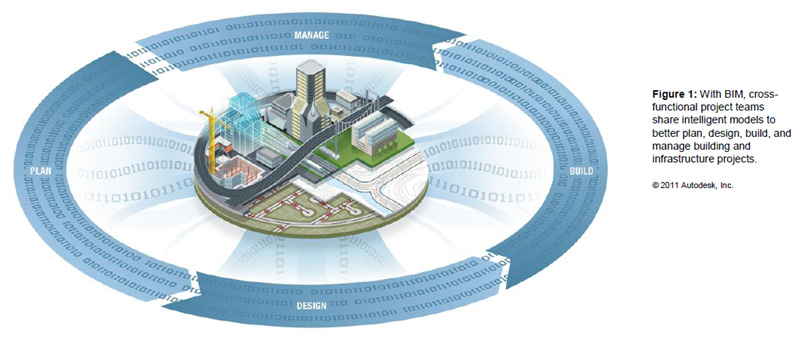Building Information Modeling helps AEC service providers to improve accuracy, efficiency, and productivity, resulting in time and cost savings.

Building Information Modeling (BIM) is an intelligent model–based design process that adds value across the entire lifecycle of building and infrastructure projects. The transformative power of BIM is worth the effort. It is already a boon for many in the industry who are realizing increased efficiency, productivity, and quality. Equally as important, according to the 2009 SmartMarket Report, the vast majority of users report seeing positive returns on their investment in BIM.
Even more powerful than the productivity gains is the potential that BIM offers to help enable AEC professionals and owners design, visualize, simulate, and analyze the key physical and functional characteristics of a project digitally—before they build it. Using information within the model, everyone on the project team can make better, more-informed decisions across the entire project lifecycle of building and infrastructure projects.
Planners can select optimum sites. Architects can produce more accurate designs with fewer errors, less waste, and closer alignment to the owner’s vision. Engineers can increase coordination with architects and other engineering disciplines, improving the reliability of their designs. Contractors can make sure that constructability issues are flagged early on when changes are less expensive to make. Ultimately, owners will be able to use the models far into the future as the basis of a comprehensive facilities and asset management program. ?The use of BIM results in data-rich as-built models that contain a wealth of information for smarter building operations, says Mitch Boryslawski, co-founder of EcoDomus, Inc.
Adapting to the advantages BIM offers requires investment in staff, processes, and technology. Approaching these changes with a positive attitude will speed the transition and allow firms to quickly realize the productivity and quality gains possible with BIM.
Read more: Realizing BIM
